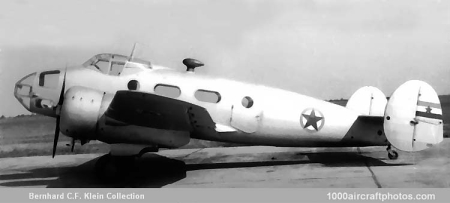Subsequently it was decided to transform the design into a bombing and aircrew trainer, and transport aircraft. The aircraft was wooden construction covered with plywood, with exception of the control surfaces, these were of metal construction covered with fabric. The bomb-aimer sat in the glazed in front of the pilot, in the aft cabin were seated the navigator and radio-operator, or 6-8 pupils.
The aircraft was fitted with two 480 hp Ranger SVG-770 twelve-cylinder air-cooled inverted V-engines, and the main wheels retracted backwards into the engine nacelles, leaving part of the wheels projecting, for safety in case of a wheels-up landing. Designated Type 214-D, the prototype flew for the first time in 1951, and twenty production aircraft were ordered, these being fitted with two 600 hp Pratt & Whitney R-1340-AN-1 nine-cylinder air-cooled radial engines.
In 1959 some aircraft were transferred to the Yugoslav Navy for patrol duties, however, lacking IFR equipment these could only be used during day-light and in good weather. By 1961, two aircraft were fitted with radar equipment below the nose and were used in the ASW role. All aircraft were withdrawn from military service in 1967 and subsequently transferred to civil aero clubs where used for para-dropping. During the 1970s the type was withdrawn from use.
Span: 53 ft 1.5 in (16.20 m)
Length: 36 ft 9 in (11.20 m)
Height: 12 ft 11 in (3.95 m)
Loaded weight: 11,059 lb (5,027 kg)
Max speed: 226 mph (365 kmh)
Service ceiling: 22,960 ft (7,000 m)
Range: 670 mls (1,080 km)
